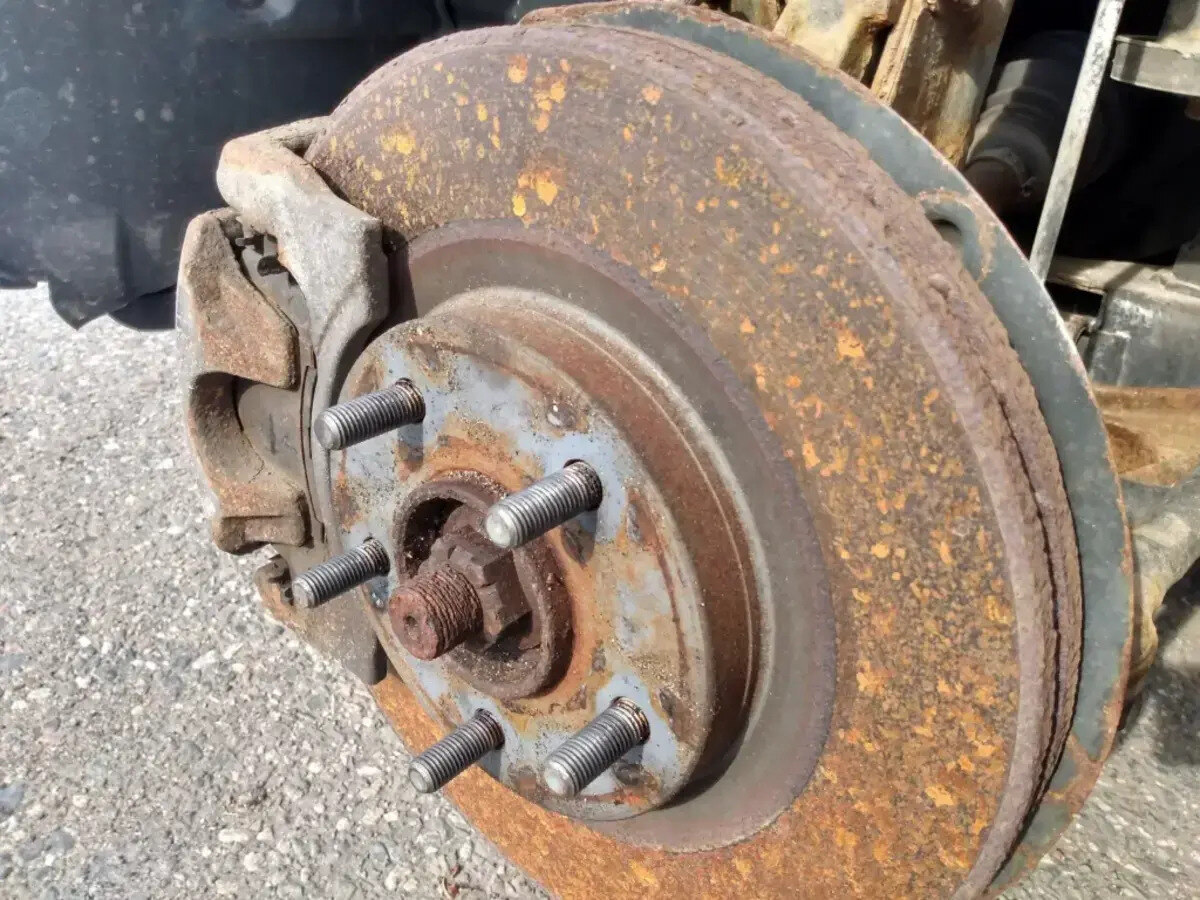

Articles
How To Remove Rust From Calipers
Modified: May 6, 2024
Learn effective techniques and tips on how to remove rust from calipers in this helpful article. Discover expert insights and methods to restore your calipers to their original state.
(Many of the links in this article redirect to a specific reviewed product. Your purchase of these products through affiliate links helps to generate commission for Storables.com, at no extra cost. Learn more)
Introduction
Rust can be a common issue for car owners, especially when it comes to the calipers. Rusty calipers not only look unsightly but can also affect the performance and safety of your vehicle’s braking system. It is essential to address the rust on your calipers and remove it promptly to maintain optimal brake function.
In this article, we will explore different methods to effectively remove rust from calipers and provide you with helpful tips to clean and protect them afterward. Whether you’re a DIY enthusiast or a car owner looking for cost-effective solutions, we’ve got you covered.
Before we delve into the rust removal methods, it’s important to understand the nature of rust on calipers and why it occurs. Calipers are crucial components of a vehicle’s braking system that grip the brake pads and apply pressure to the rotors, resulting in the deceleration of the wheels. These calipers are exposed to various elements, including moisture, road salt, and debris.
Over time, these external factors can cause the calipers to rust. Rust occurs when iron or steel reacts with oxygen and moisture, leading to the formation of iron oxide. The rust not only compromises the visual appeal of your calipers but can also lead to corrosion and impair the smooth operation of the braking system.
Removing rust from calipers requires patience, the right tools, and proper techniques. It’s essential to take precautionary measures to protect other components, such as brake lines and rotors, during the rust removal process. Let’s now dive into the steps you can take to effectively remove rust from your calipers, ensuring they are safe and in optimal condition.
Key Takeaways:
- Don’t let rust compromise your calipers! Whether using vinegar and baking soda, a rust dissolver, sandpaper, or electrolysis, follow the method that best suits your needs to restore your calipers to their original condition.
- After removing rust, ensure thorough cleaning and apply a protective coating to prevent future rusting. Regular inspections and proactive maintenance will help monitor your calipers for any signs of rust or damage.
Read more: How To Remove Rust From Glass
Understanding Rust on Calipers
Before we proceed with the methods to remove rust from calipers, it’s important to have a deeper understanding of how rust forms and its impact on the functionality of the calipers.
Rust is a common phenomenon that occurs when iron or steel reacts with oxygen and moisture in the air. As calipers are typically made of metal, they are prone to rust when exposed to these elements. The rusting process begins with the formation of small patches of iron oxide, which gradually spread and deteriorate the surface of the calipers.
When rust forms on calipers, it can have several negative effects. Firstly, rust can cause the calipers to become seized or stuck, making it difficult for the brake pads to fully retract. This can result in dragging brakes and reduced braking efficiency. Additionally, rust can lead to the corrosion of crucial caliper components, such as the pistons and slide pins, which can further impair their functionality.
Furthermore, rust on calipers can compromise the structural integrity of these components. The presence of rust weakens the metal, making it more prone to cracking or breaking under stress. This poses a safety risk as it can lead to brake failure or uneven braking performance.
It’s important to note that rust on calipers should not be ignored or neglected. Regular maintenance and rust prevention measures can help prolong the lifespan of your calipers and ensure optimal brake performance. By understanding the impact of rust on calipers, you can take the necessary steps to remove it and prevent its recurrence.
Now that we have a better understanding of the significance of rust on calipers, let’s move on to the preparations required for rust removal, ensuring a smooth and effective process.
Preparing for Rust Removal
Before you begin the process of removing rust from your calipers, it is essential to adequately prepare and gather the necessary tools and materials. Proper preparation will ensure a more efficient and effective rust removal process. Here are some steps to follow when preparing for rust removal:
- Inspect the calipers: Before starting the rust removal process, carefully inspect the calipers for any signs of damage or excessive rust. Check for cracks, leaks, or other issues that may require professional attention or replacement. It’s crucial to address any underlying problems before proceeding with rust removal.
- Gather the necessary tools and materials: Depending on the method you choose for rust removal, you will need specific tools and materials. Common tools include wire brushes, sandpaper, rags, rubber gloves, safety goggles, and a hose or bucket for water. It’s a good idea to have everything ready before you start to avoid any unnecessary delays.
- Ensure safety precautions: Rust removal can involve using chemicals, abrasive materials, or power tools. It’s vital to prioritize safety during the process. Wear appropriate protective gear like gloves and goggles to protect yourself from any potential harm. Additionally, work in a well-ventilated area to minimize exposure to fumes or dust.
- Protect other components: Take measures to protect other parts of the braking system, such as the brake lines and rotors, from any accidental damage during the rust removal process. Use masking tape or plastic bags to cover these components and prevent any unwanted contact with the cleaning agents or abrasive materials.
- Clean the calipers: Before beginning the rust removal process, clean the calipers thoroughly to remove any loose debris or dirt. Use a mild soap or automotive cleaner and a cloth or brush to gently scrub the calipers. This will ensure better visibility of the rusted areas and allow for more effective rust removal.
Following these preparatory steps will set you up for success in removing rust from your calipers. Once you are well-prepared, you can move on to the various methods available for rust removal. Each method has its own advantages and considerations, so choose the one that suits your preferences and the level of rust on your calipers.
Methods to Remove Rust from Calipers
When it comes to removing rust from your calipers, there are several effective methods you can choose from. The method you select may depend on the severity of the rust, the tools and materials you have on hand, and your personal preference. Here are four commonly used methods to remove rust from calipers:
- Method 1: Using Vinegar and Baking Soda
- Method 2: Using Rust Dissolver
- Method 3: Using Sandpaper or Wire Brush
- Method 4: Electrolysis Rust Removal
This method is an affordable and environmentally friendly option for rust removal. Start by mixing equal parts vinegar and baking soda to create a paste. Apply the paste onto the rusted areas of the calipers and let it sit for a few hours. Then, scrub gently with a brush or sponge. The acid in the vinegar will help dissolve the rust, while the baking soda acts as a gentle abrasive to remove the rusted layers.
Rust dissolver products are commercially available and can be highly effective in removing rust from calipers. Follow the instructions on the product packaging for the best results. Generally, you would apply the rust dissolver onto the rusted areas and leave it for a specific amount of time. Then, scrub the calipers with a wire brush or abrasive pad to remove any remaining rust. Rinse thoroughly with water.
This method involves manually removing the rust using sandpaper or a wire brush. Start by cleaning the calipers with soap and water. Once dry, sand the rusted areas using coarse-grit sandpaper or scrub with a wire brush. Be careful not to damage other components or remove too much material from the calipers. Gradually switch to finer-grit sandpaper to smoothen the surface. Once done, clean the calipers and apply a protective coating.
This method requires a bit more technical expertise but can be highly effective in removing rust. It involves creating an electrolyte solution using water and a small amount of washing soda or baking soda. Submerge the rusted calipers in the solution and connect a charger or power source to create an electric current. The rust will be attracted to a sacrificial metal (such as steel), leaving your calipers rust-free. This method may take several hours or even overnight to complete.
Choose the method that suits your needs and the level of rust on your calipers. Remember to follow the instructions carefully and take appropriate safety precautions during the rust removal process. Once the rust is removed, it’s important to clean and protect the calipers to prevent future rusting.
Method 1: Using Vinegar and Baking Soda
Using vinegar and baking soda is a popular and inexpensive method for removing rust from calipers. This method is environmentally friendly, as both vinegar and baking soda are non-toxic and readily available in most households. Here’s a step-by-step guide on how to use vinegar and baking soda to remove rust from calipers:
- Prepare the vinegar and baking soda paste: In a small bowl, mix equal parts vinegar and baking soda to create a thick paste. The acidic nature of the vinegar helps break down the rust, while the baking soda works as a gentle abrasive to remove the rusted layers.
- Apply the paste onto the rusted areas: Using a brush or sponge, apply the vinegar and baking soda paste onto the rusted areas of the calipers. Ensure that the paste covers the rusted surfaces evenly. For better adhesion, you can leave the paste on the calipers for a few minutes before proceeding to the next step.
- Let it sit and work its magic: Allow the vinegar and baking soda paste to sit on the rusted areas for a few hours or overnight. This will give the acidic solution enough time to penetrate the rust and break it down. Cover the calipers with plastic wrap or a plastic bag to prevent the paste from drying out.
- Scrub gently: After the designated time has passed, take a brush or a sponge and gently scrub the calipers to remove the loosened rust. Be careful not to apply excess pressure, as it may damage the caliper’s surface. Work in small circular motions to effectively remove the rust. If necessary, you can reapply the paste and repeat the process for stubborn rust spots.
- Rinse and dry: Once you’re satisfied with the rust removal, rinse the calipers thoroughly with water to remove any residue. Pay close attention to ensure all the baking soda and vinegar are washed away. Proper rinsing is important to prevent any lingering acid or abrasive substance from causing damage in the long term. Dry the calipers thoroughly with a clean cloth or air drying to prevent moisture accumulation.
After completing the rust removal process, it’s essential to clean and protect the calipers to prevent future rusting. This can be done by applying a suitable rust inhibitor or a protective coating specifically designed for calipers. Regular maintenance and inspections will help keep your calipers in optimal condition and extend their lifespan.
Using vinegar and baking soda to remove rust from calipers is an effective and affordable method. However, it may take more time and effort compared to other methods, especially for heavily rusted calipers. If you have severe rust or are unsure about the effectiveness of this method, it is recommended to consult a professional or consider alternative methods.
Use a wire brush or sandpaper to remove surface rust from calipers. Apply a rust converter to prevent further corrosion. Finish with a high-temperature paint for protection.
Read more: How To Remove Rust From The Bathtub
Method 2: Using Rust Dissolver
Another effective method for removing rust from calipers is to use a rust dissolver product. Rust dissolvers are commercially available solutions specifically designed to break down rust and make it easier to remove. Here’s a step-by-step guide on how to use a rust dissolver to remove rust from your calipers:
- Choose a rust dissolver product: Visit your local automotive store or hardware store and look for a rust dissolver product. There are various brands available, so choose one that is recommended for automotive applications and is suitable for the level of rust on your calipers.
- Read and follow the instructions: Before using the rust dissolver, carefully read and follow the instructions provided by the manufacturer. Each product may have specific instructions and precautions, so it’s important to adhere to them for optimal results and safety.
- Prepare the calipers: Clean the calipers thoroughly with soap and water to remove any loose dirt or debris. Ensure the calipers are dry before applying the rust dissolver. Also, protect other components, such as brake lines and rotors, by covering them with plastic bags or masking tape.
- Apply the rust dissolver: Pour the rust dissolver onto the rusted areas of the calipers, ensuring complete coverage. Use a brush, sponge, or cloth to spread the product evenly. It’s important to wear rubber gloves and safety goggles during this process to protect your skin and eyes from any potential contact with the product.
- Allow the rust dissolver to work: Follow the manufacturer’s instructions regarding the waiting time. Generally, you will need to let the rust dissolver sit on the calipers for a specific amount of time to allow it to penetrate and dissolve the rust. Avoid letting the product dry out; if necessary, you can mist it with water to keep it moist.
- Scrub and rinse: After the required waiting time, use a wire brush or abrasive pad to scrub the calipers, focusing on the rusted areas. The rust should come off easily as the dissolver has loosened it. Continue scrubbing until all visible rust is removed. Finally, rinse the calipers thoroughly with water to remove any residue.
- Dry and inspect: Once the rust is removed and the calipers are rinsed, dry them thoroughly with a clean cloth or air drying. Inspect the calipers closely to ensure all rust has been eliminated. If any spots remain, you can repeat the process or try a different rust removal method.
After successfully removing rust from the calipers using a rust dissolver, it’s important to clean and protect them to prevent future rusting. Apply a suitable protective coating or rust inhibitor specifically designed for calipers. Regular maintenance and inspection will help keep your calipers in good condition and prolong their lifespan.
Using a rust dissolver is an effective method for removing rust from calipers, especially for more severe cases. However, it’s important to follow the instructions carefully and take appropriate safety precautions. If you’re unsure about using a rust dissolver, or if the rust is extensive, it is recommended to seek professional assistance or consider alternative rust removal methods.
Method 3: Using Sandpaper or Wire Brush
If you prefer a hands-on approach and have moderate rust on your calipers, using sandpaper or a wire brush can be an effective method to remove the rust. This method requires manual effort but allows for better control over the rust removal process. Here’s a step-by-step guide on how to use sandpaper or a wire brush to remove rust from your calipers:
- Clean the calipers: Start by cleaning the calipers with soap and water to remove any loose dirt or debris. This will ensure better visibility of the rusted areas and help prevent any particles from scratching the caliper’s surface during the rust removal process.
- Select the appropriate sandpaper or wire brush: Choose a sandpaper with a coarse grit or a wire brush suitable for metal surfaces. The grit of the sandpaper or the stiffness of the wire brush will depend on the severity of the rust. Start with a coarser option and gradually switch to a finer grit or softer brush as you progress.
- Sand or scrub the rusted areas: Using the sandpaper or wire brush, focus on the rusted areas of the calipers. Apply light to moderate pressure and move in a back-and-forth motion, following the contours of the caliper. Be mindful not to be too aggressive or apply excessive force, as this may damage the caliper’s surface or remove too much material.
- Continue until the rust is removed: Keep sanding or scrubbing the rusted areas until all visible rust is removed. Periodically wipe away any dust or debris with a clean cloth to assess your progress. You may need to switch to a finer grit sandpaper or a softer brush as you approach the final stages to smoothen the surface and remove any remaining traces of rust.
- Rinse and dry: Once satisfied with the rust removal, rinse the calipers thoroughly with water to remove any residue. Ensure that all debris and sanding particles are washed away. Dry the calipers completely with a clean cloth or allow them to air dry to prevent any moisture accumulation.
- Apply a protective coating: After removing the rust, it’s important to protect the calipers from future corrosion. Apply a suitable protective coating, such as a high-temperature paint or a rust inhibitor specifically designed for calipers. Follow the instructions on the product for proper application and allow sufficient drying time.
Using sandpaper or a wire brush to remove rust from calipers offers a hands-on approach and allows for meticulous rust removal. However, it can be time-consuming and requires some physical effort. It’s important to exercise caution and not apply excessive force that could damage the calipers.
Regularly inspect your calipers for any signs of rust and address the issue as soon as possible to prevent further corrosion. Proper maintenance and protective measures will help keep your calipers in good condition and ensure optimal braking performance.
Method 4: Electrolysis Rust Removal
If you’re looking for a more advanced method to remove rust from calipers, electrolysis rust removal can be an effective option. While it requires some technical expertise and additional equipment, electrolysis offers a thorough rust removal process. Here’s a step-by-step guide on how to use electrolysis to remove rust from your calipers:
- Set up the electrolysis tank: Start by preparing an electrolysis tank. You will need a container that is large enough to submerge the calipers and non-conductive, such as plastic or glass. Fill the tank with water and add a small amount of washing soda or baking soda to create an electrolyte solution.
- Connect the electrodes: Place two electrodes into the tank. One electrode should be attached to the positive terminal (anode) of a power source, such as a battery charger, and the other electrode to the negative terminal (cathode). Ensure that the electrodes are not touching each other or the calipers.
- Submerge the calipers: Submerge the rusted calipers into the electrolysis tank so that they are completely immersed in the electrolyte solution. Make sure that they are not touching each other or the electrodes to avoid any short circuits.
- Turn on the power source: Turn on the power source and set it to a low voltage, usually between 6-12 volts. This low voltage is sufficient for the electrolysis process without causing any damage to the calipers. Monitor the process and adjust the voltage if necessary.
- Allow the process to run: Let the electrolysis process run for several hours or overnight. During this time, rust particles on the calipers will be attracted to the sacrificial metal (such as steel) electrode, effectively removing the rust from the calipers. It’s important to ensure good ventilation during this process as some fumes may be released.
- Inspect and clean the calipers: Once the process is complete, carefully remove the calipers from the electrolysis tank. Use a brush or sponge and water to clean off any remaining rust residue. Rinse the calipers thoroughly with water to remove any electrolyte solution or debris.
- Dry and protect the calipers: Dry the calipers completely using a clean cloth or allow them to air dry. Apply a suitable protective coating or rust inhibitor to prevent future rusting. A high-temperature paint or a specialized caliper coating can be used. Follow the manufacturer’s instructions for application and drying time.
Electrolysis rust removal can be highly effective in eliminating rust from calipers, even in hard-to-reach areas. However, this method requires careful attention to safety and proper equipment setup. Be sure to take appropriate precautions, such as wearing rubber gloves and safety goggles, and working in a well-ventilated area.
If you’re unsure about your ability to set up the electrolysis process or if you have extensive rust on your calipers, it is recommended to seek professional assistance. They can provide guidance and ensure the removal process is done correctly.
By following this method, you can achieve a comprehensive rust removal from your calipers and restore them to their original condition.
Cleaning and Protecting Calipers after Rust Removal
After removing rust from your calipers, it’s crucial to clean and protect them to prevent future rusting and ensure their longevity. Here are some important steps to follow for proper cleaning and protection:
- Thoroughly clean the calipers: Use soap and water, along with a brush or sponge, to clean the calipers after rust removal. Remove any debris, residue, or cleaning agents that may be lingering on the surface. Pay particular attention to crevices and hard-to-reach areas to ensure a thorough clean.
- Rinse with water: Rinse the calipers thoroughly with clean water to remove any remaining soap or debris. This step is essential to prevent any potential residue from causing damage or interfering with protective coatings.
- Dry completely: After rinsing, make sure to dry the calipers completely. Use a clean, lint-free cloth to remove any excess moisture. Allow the calipers to air dry as well, ensuring that no water droplets remain before proceeding to the next step.
- Apply a protective coating: To prevent future rusting, it’s important to apply a suitable protective coating on the calipers. There are various options available, such as high-temperature paint specifically designed for calipers or rust inhibitors that provide long-term protection. Follow the manufacturer’s instructions for proper application, including adequate drying time.
- Inspect and monitor: Regularly inspect the calipers during routine maintenance to ensure that the protective coating is intact and performing effectively. Look for any signs of wear or damage to the coating and address them promptly to maintain optimal protection.
- Monitor for signs of rust: Keep an eye out for any signs of rust reappearing on the calipers. If you notice any rust spots or discoloration, take immediate action to remove the rust and reapply the protective coating. Regular inspections and proactive maintenance will help prevent rust from returning.
- Consider routine cleaning and maintenance: Incorporate regular cleaning and maintenance of your calipers into your vehicle care routine. This can involve periodically cleaning the calipers with soap and water, removing any dirt or brake dust buildup, and inspecting for any signs of rust or damage.
Cleaning and protecting your calipers are essential steps in maintaining their appearance, functionality, and overall longevity. By following these steps, you can ensure the continued performance of your calipers and prevent rust from compromising their integrity.
Remember that the specific cleaning and protective products you choose will depend on your caliper’s material, finish, and the recommendations of the manufacturer. It’s always a good idea to refer to the product instructions and consult with professionals if you have any doubts or questions.
By taking the time to clean and protect your calipers after rust removal, you can enjoy safe and efficient braking performance while preserving the visual appeal of these important automotive components.
Read more: How To Remove Rust From Stucco
Conclusion
Removing rust from calipers is an important maintenance task that ensures the longevity and optimal performance of your vehicle’s braking system. Rust not only affects the appearance of the calipers but can also compromise their functionality and safety. By following the methods outlined in this article, you can effectively remove rust from your calipers and restore them to their original condition.
Whether you choose to use vinegar and baking soda, a rust dissolver, sandpaper or a wire brush, or electrolysis, each method offers its own benefits and considerations. Select the method that best suits your needs, the level of rust on your calipers, and the tools and materials you have available. Ensure that you follow the instructions carefully and take the necessary safety precautions throughout the rust removal process.
Once the rust is removed from the calipers, proper cleaning and protection are vital. Thoroughly clean the calipers, rinse them with water, and dry them completely to prevent any residue or moisture. Apply a suitable protective coating or rust inhibitor to prevent future rusting. Regular inspections and proactive maintenance will help monitor the calipers for any signs of rust or damage and facilitate prompt action if required.
Remember, if you’re unsure about any aspect of the rust removal process or if you have extensive rust on your calipers, it’s always advisable to seek professional assistance. They can provide expert guidance and ensure that the calipers are properly cleaned, protected, and restored.
By diligently addressing rust on your calipers, you can maintain the performance, safety, and aesthetics of your vehicle’s braking system. Regular maintenance and preventative measures will help extend the lifespan of your calipers and contribute to a smooth and reliable driving experience.
So don’t let rust compromise your calipers. Take action today, follow the appropriate method, and enjoy the benefits of rust-free calipers for years to come.
If rust removal has been on your mind, you're not alone in facing this common issue. For enthusiasts eager to tackle similar challenges, learning how to get rust off a cast iron waffle iron might just be your next rewarding project. With practical advice at your fingertips, maintaining your tools and kitchenware in pristine condition becomes less of a chore and more of a triumph. Don't let rust put a damper on your items' functionality and aesthetics; check out our detailed guide and keep your belongings looking as good as new!
Frequently Asked Questions about How To Remove Rust From Calipers
Was this page helpful?
At Storables.com, we guarantee accurate and reliable information. Our content, validated by Expert Board Contributors, is crafted following stringent Editorial Policies. We're committed to providing you with well-researched, expert-backed insights for all your informational needs.
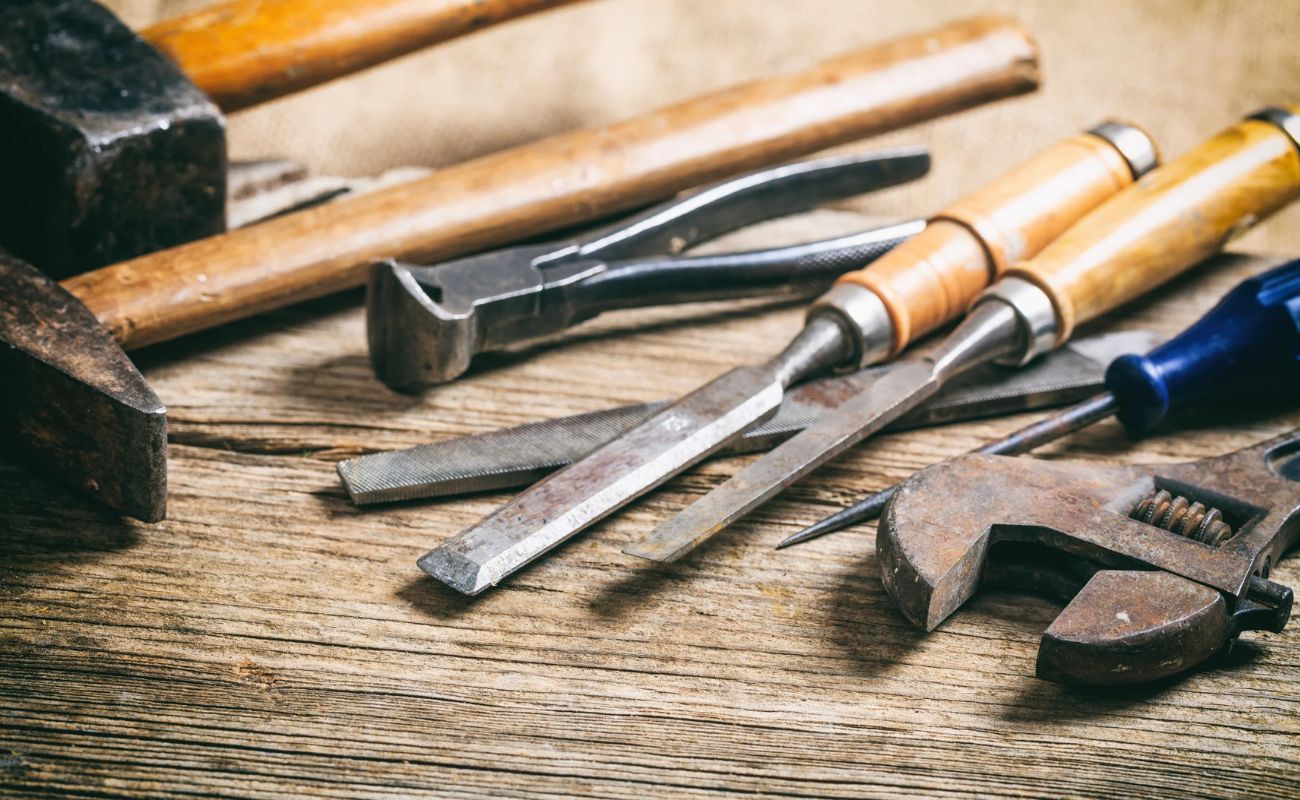
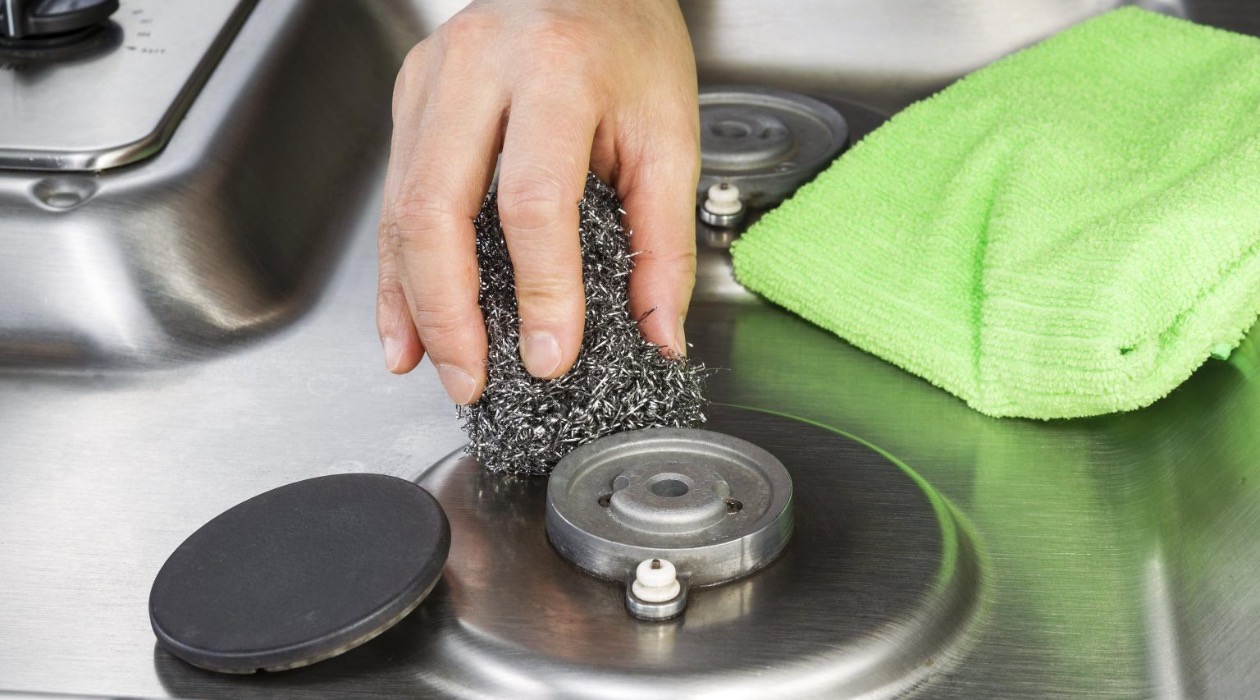
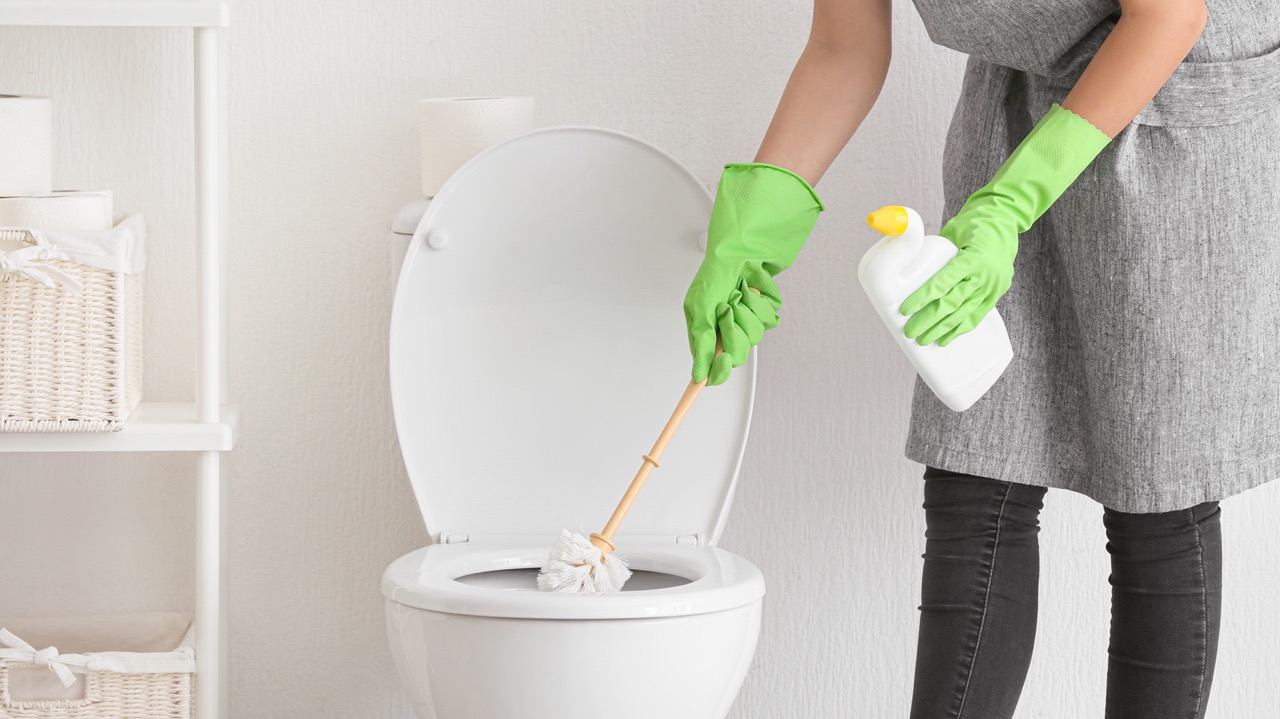
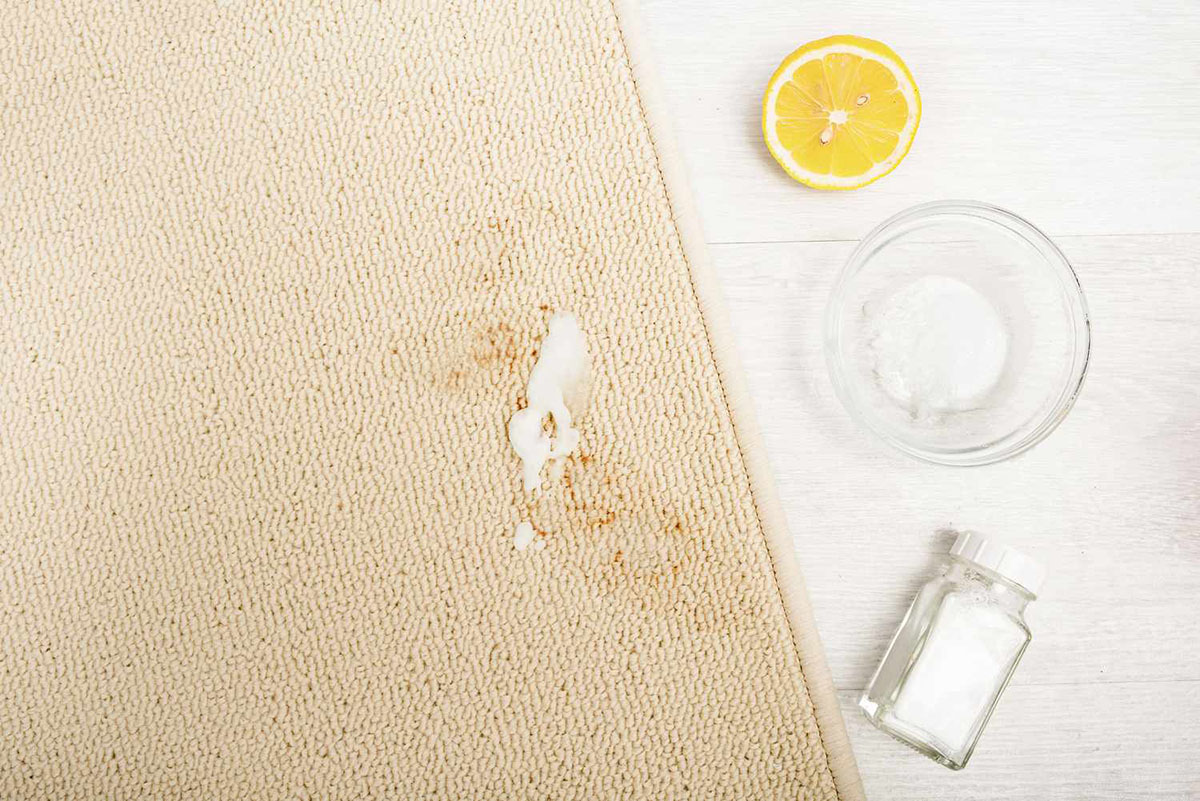
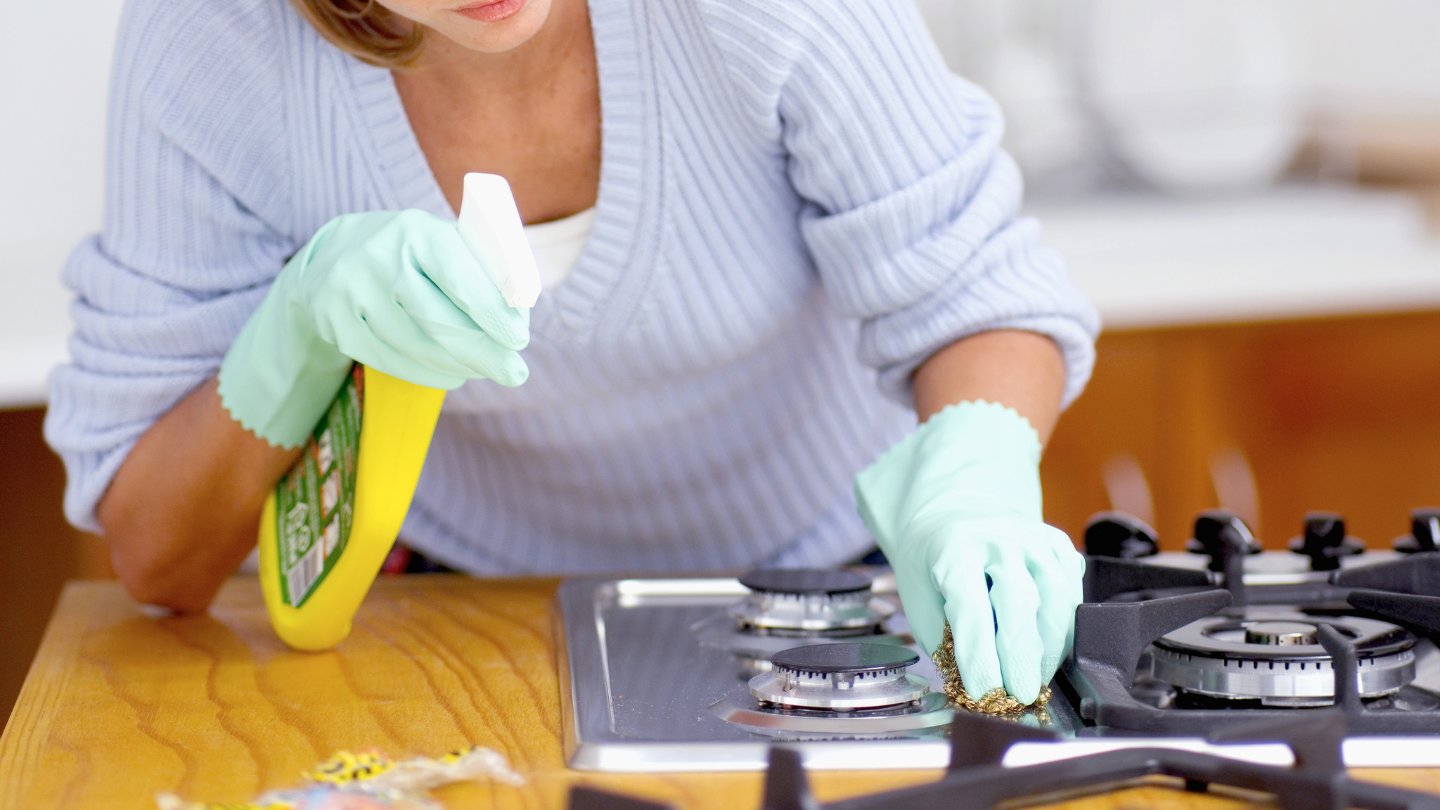

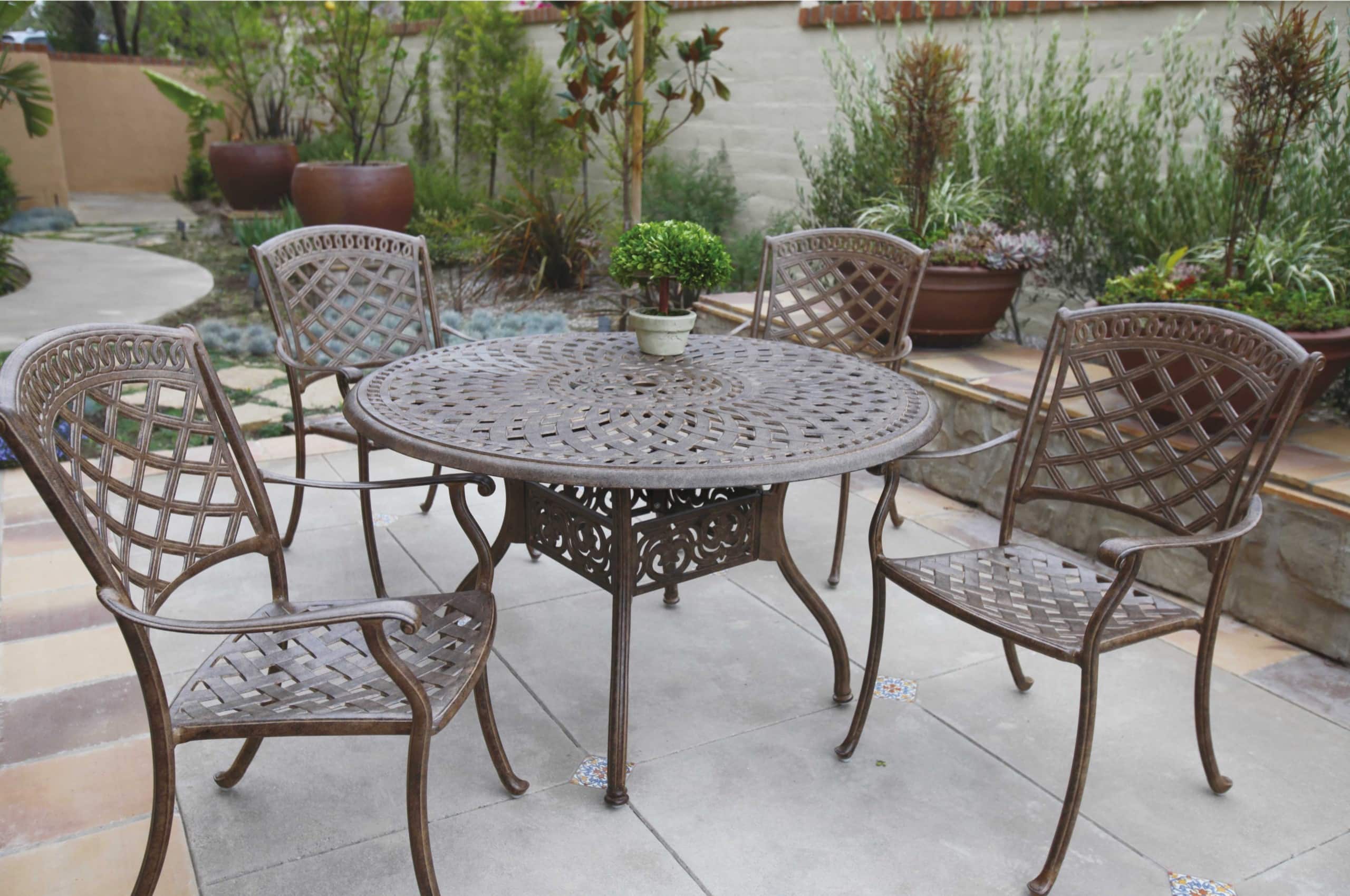
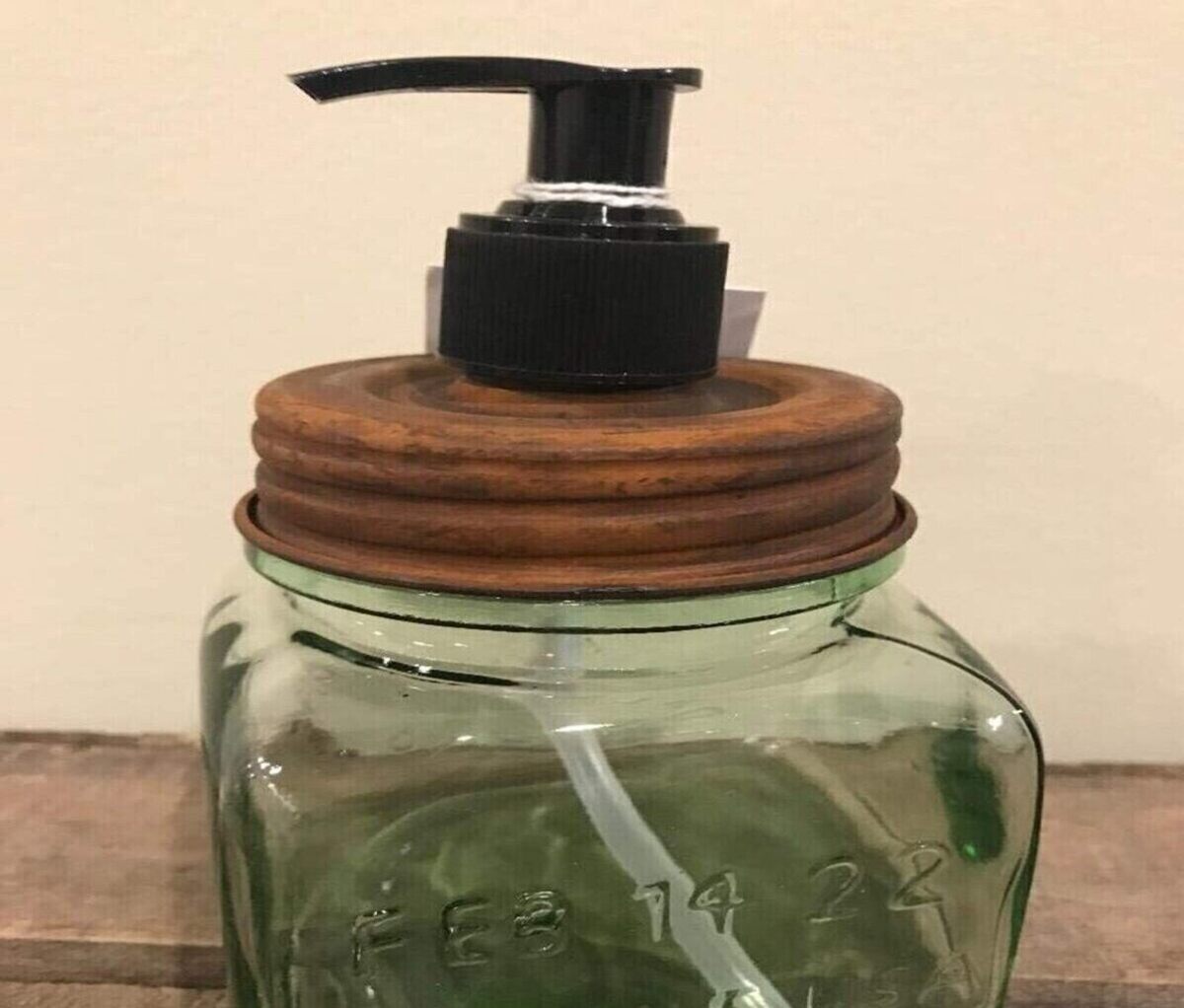
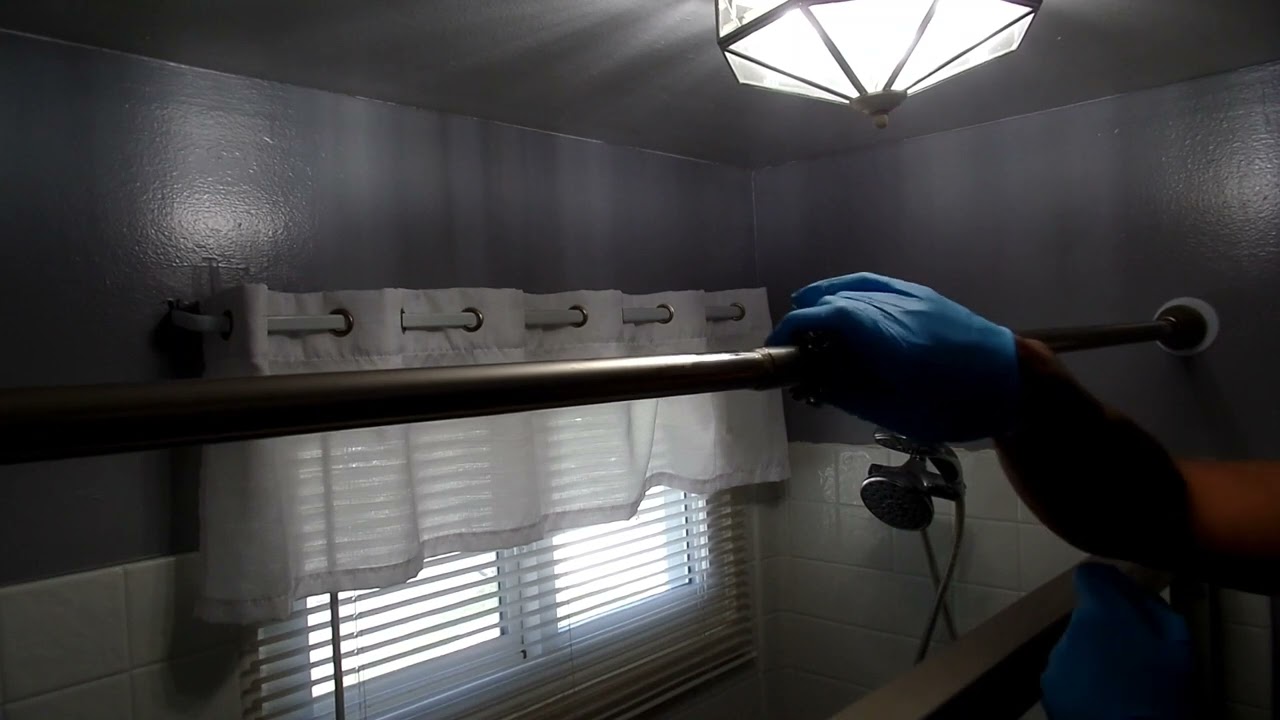

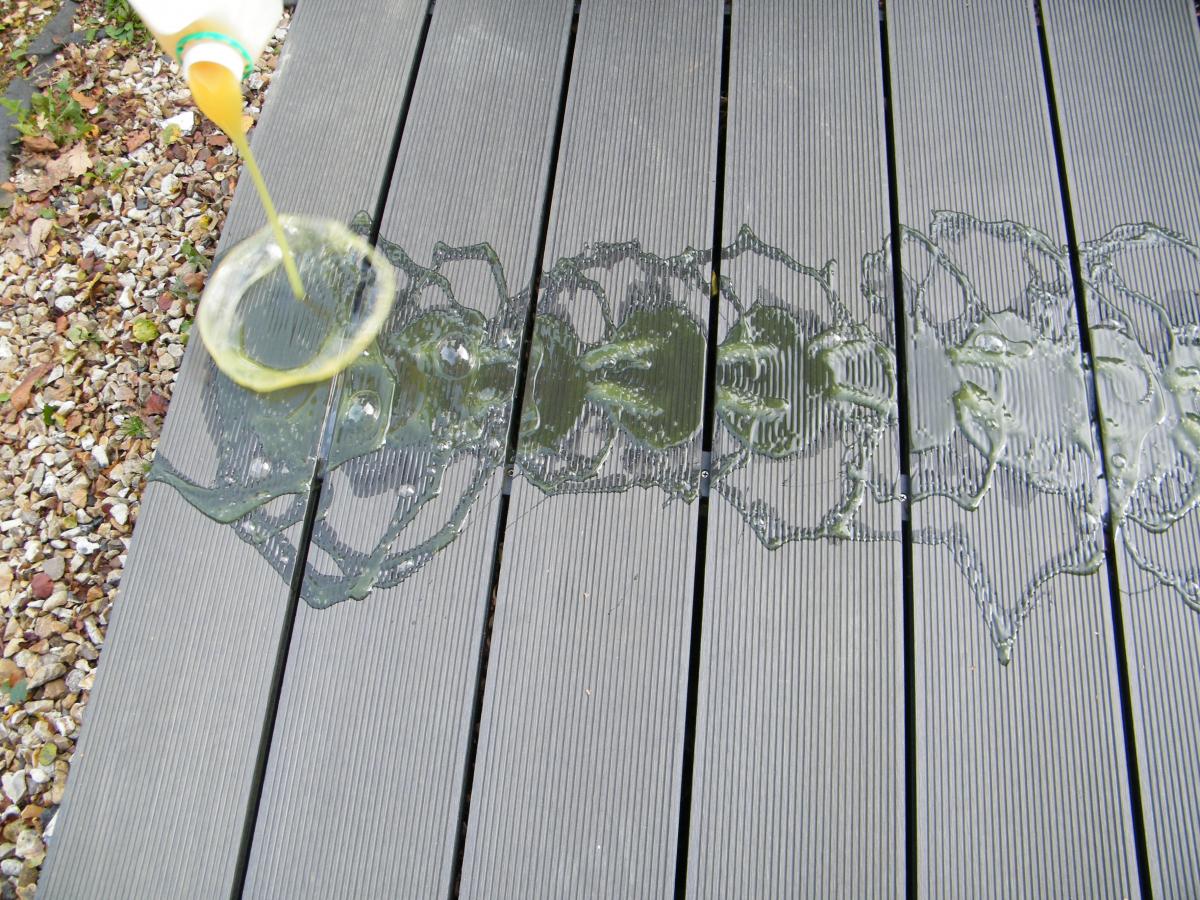
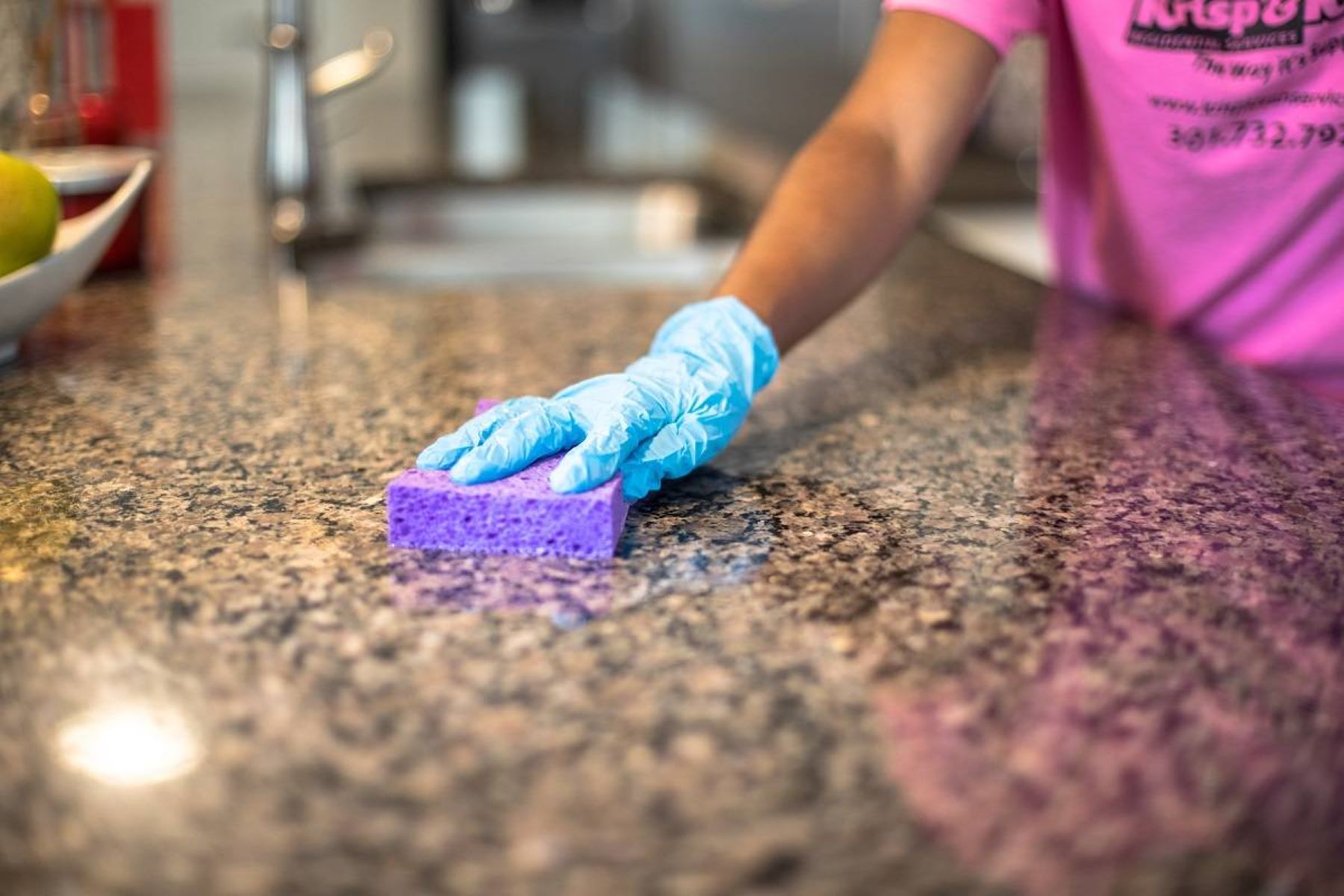


0 thoughts on “How To Remove Rust From Calipers”